If you double the fortification of a city, what do you get? Eightification of course. And if you halve it, twentification. Yes, I know, terrible. My teenage son and niece thought so too. But when you visit one fort after another in just a couple of days, you become a serial ‘kila.’
In a recent previous column, I had begun the account of my serendipitous visit to Chaul (also called Revdanda fort), the historic fort ruin in Maharashtra’s Raigad district, a few kilometres away from Alibag.
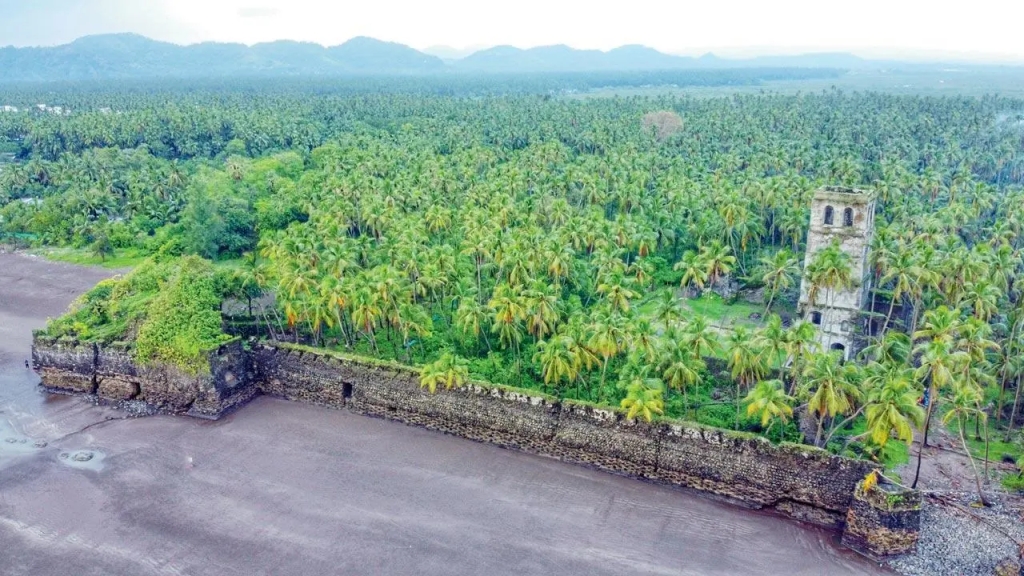
Senior lecturer in Portuguese history at the Université d’Aix-Marseille Ernestine Carreira’s book Globalisng Goa (1660-1820): Change and exchange in a former capital of empire’

documents the history of this fort city and its strategic importance to the Estado da Índia.
Chaul comes up in the context of the complex interactions between the Portuguese and the Marathas, and Carreira rightly quotes the landmark 1983 text (translated from the Marathi) by Dr. Pandurang Sakharam Pssurlencar, ‘Portuguese Maratha relations,’

so I looked this up too.
What emerges is far from the black-and-white clear demarcations that 21st century hindsight tends to confer on our past. Pissurlencar himself writes in the first chapter that “between the Portuguese and the Marathas alone, no less than 25 pacts and treaties were concluded.”
Pissurlencar in his second chapter quotes a 1636 letter from Shahaji (father of the eventual Chhatrapati Shivaji Maharaj) to the Portuguese captain at Chaul, seeking shelter to his family “as he had always maintained friendly relations with them” and his family’s safety was in jeopardy from the Mughals and the Bijapur sultanate. The Portuguese declined fearing the wrath of Delhi and Bijapur, but offered to covertly secure his safe passage onward.
Pissurlencar also quotes a source in the Arquivo Histórico Ultramarino (Lisbon) which makes it obvious that there were Portuguese men serving in Shivaji’s army and in building ships for the Maratha navy, eventually causing alarm to the Portuguese authorities, as the ships could be “a source of trouble” not only against the Siddi [of Janjira] but against the Portuguese themselves.
In 1667, the Viceroy João Nunes da Cunha, Conde de São Vicente wrote to Lisbon: “I am afraid of Shivaji’s naval ships. We did not take sufficient preventive steps and he has built many a fort on the Konkan coast. Today he has several ships and they are large ones.”
In keeping with their guerilla tactics on land, Shivaji’s fleet consisted mostly of ‘galvetas’, small but speedy, a distinct advantage over the “slow large-sized Portuguese ships.”
“On 10 February 1670”, Pissurlencar writes, “Shivaji entered into a pact of friendship with the Portuguese.” One of its terms was that, since the Siddi [Janjira] had accepted the overlordship of the Portuguese, they were under an obligation to protect him, but since this ran counter to the “new friendship” between the Portuguese and the Marathas, the former would use their influence to conclude a mutually satisfactory treaty between the Siddi and Shivaji. Talk about ‘frenemies’!
Carreira refers to the collapse of trade for Goa’s merchant fleet in the early 1700s “both in the Atlantic and within secondary networks in Asia, but Chaul, Bassein, Daman and Diu could take over on regional, coastal shipping, sometimes by joining up with Jewish and Parsi shipping companies from Surat.” Some of those Jewish merchant families must certainly have been in this region? Are some of their descendants still here, if they haven’t been part of the mass migration to Israel and beyond?
In the previous column I had highlighted the Bene Israeli settlement going back over 2000 years, and even being responsible for the etymology of Alibag (“Eli cha Bagh”, “Eli’s garden”). Although Alibag’s Magen Aboth synagogue was temporarily off-limits to us (as a precautionary security measure in the wake of the recent events in Israel-Palestine), we passed by the Bene Israeli cemetery in a deserted location in Korlai


and were able to get close to the few gravestones there, in Hebrew and Marathi, with names such as Eliyahu Solomon Sogaonkar, Michael Eliyahu Sogaonkar and Jonah Moshe Ashtamkar.






Portuguese influence continued to wane, and Chaul fell to the Marathas in 1740, then to the British East India Company, and was already a ruin when J. Gerson da Cunha wrote his ‘Notes on the History and Antiquities of Chaul and Bassein’ (1876).
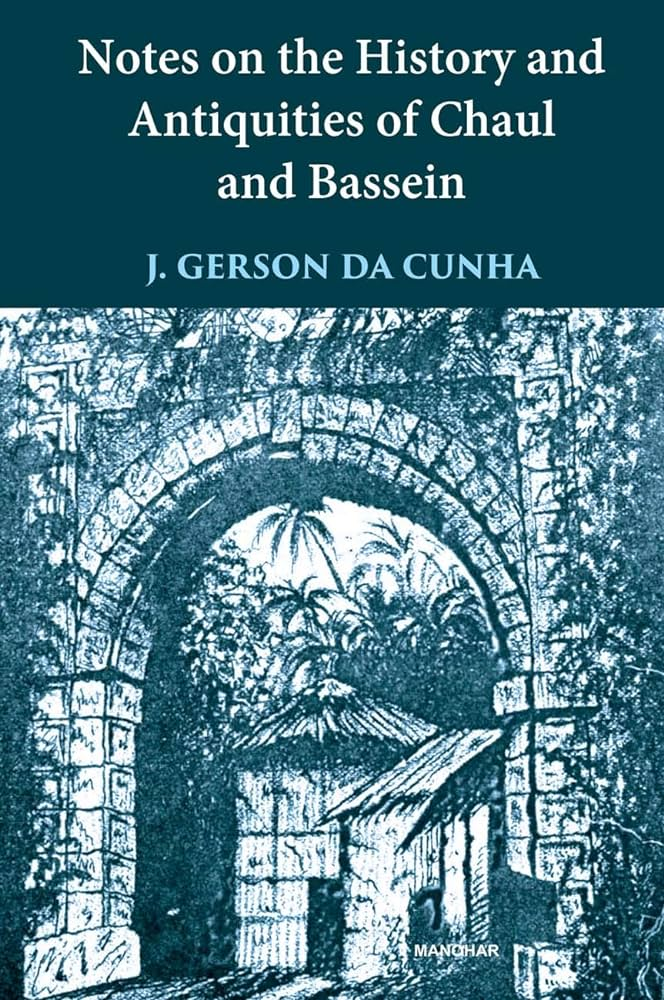
Da Cunha’s tone to the current reader smacks of what Edward Said called “the Orientalist gaze”, but he waxes almost poetic when he says in the Preface: “Even at the present day, among the thousand associations which crowd upon the mind when we gaze upon their ruins, none is more moving than the thought that we have before us the relics of a civilisation that, whatever its faults, or howsoever anachronistic its institutions may appear to the present dwellers on the globe, there is no doubt that it answered its purpose well, met best all the exigencies of the time, and when it became effete ceased to exist – a mere question of evolution, and not of revolution. To try to prolong it, however, beyond the period it was intended to serve in the economy of human society, to strive to extend it outside the sphere within which it was designed to move, would naturally amount to involving it in ruin. And that is precisely what took place.”
That ruin has undergone further decay since then to the time Amita Kanekar described Chaul in her valuable pocket-book on Portuguese sea forts

(which I sadly forgot to carry with me) and the downward slide (“evolution, not revolution”) continues.
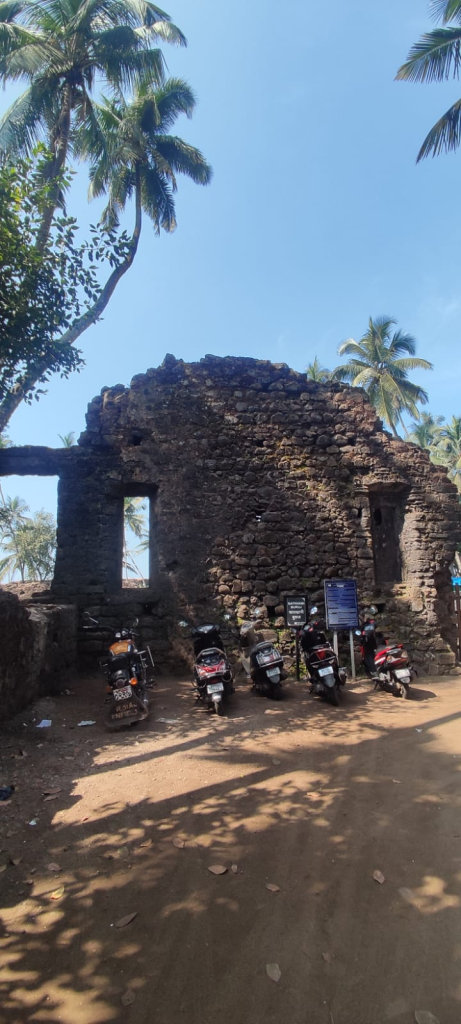



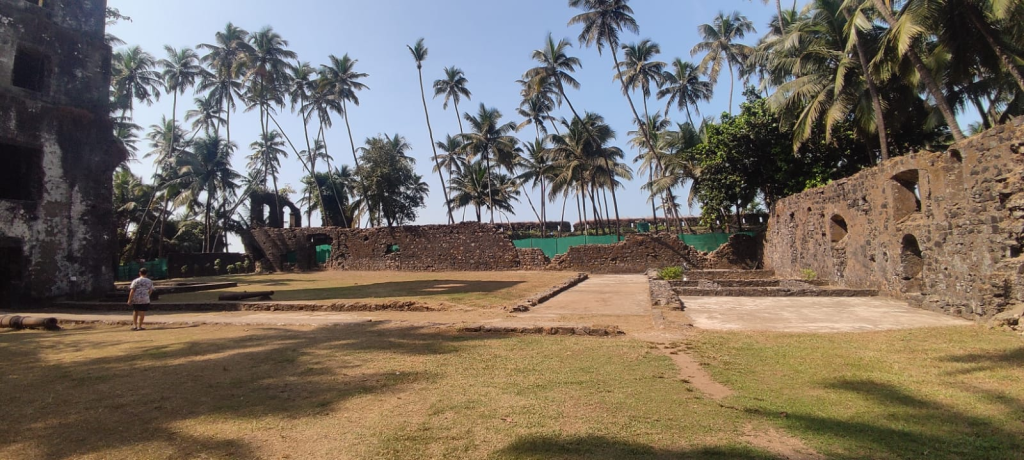

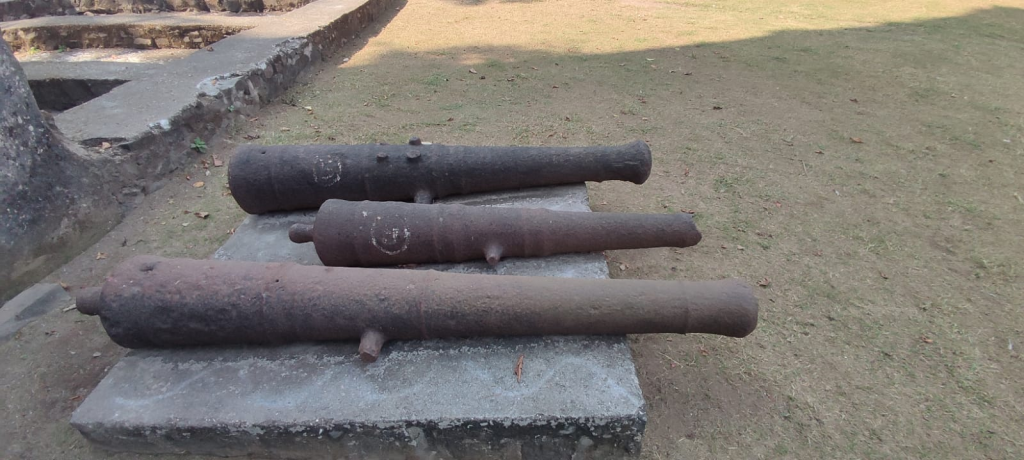
The only somewhat imposing structure still standing was the tower of the Franciscan convent of Santa Barbara, founded before 1564 but rebuilt after 1570. Kanekar informs us it was probably intended as a watchtower and navigational landmark. Two arched openings in its roofless upper storey (through which one sees bare sky) and a little window below give a ghoulish face to the façade, helplessly looking at the surrounding desolation.










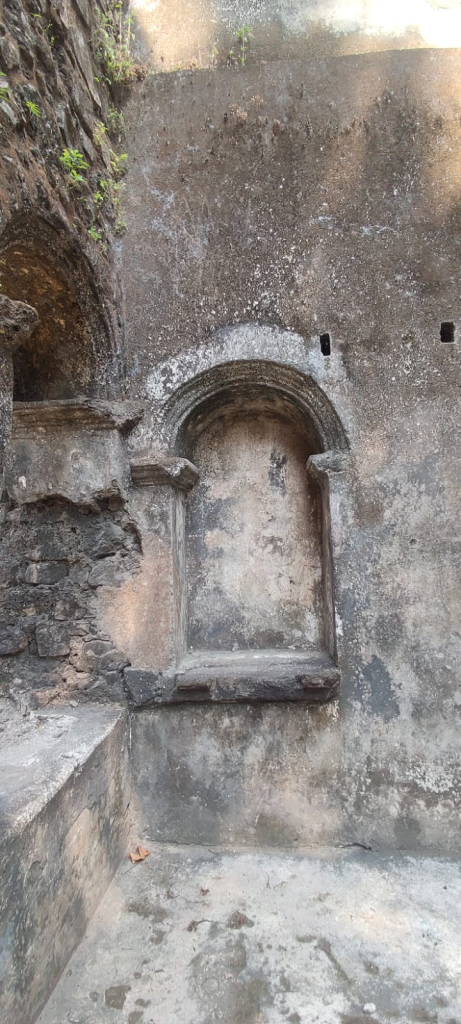


Subsequent visits to the Chhatrapati Shivaji Maharaj Vastu Sangrahalaya (CSMVS, formerly the Prince of Wales Museum) revealed two inscription headstones from Chaul in the verandah area to the left of its entrance. One records construction in the fortress between 1635-36, and that João de Veloso Thobar, its captain, adopted St Francis Xavier as patron of the city.


The second inscription documents the vow made by the King Dom João IV in the Cortes in 1646 to “defend by all means in his power the Immaculate Conception of the Virgin Mary”, for which purpose a decree was passed to carve such inscriptions in every city and fort of the Portuguese in India.

However, as we have seen, despite all the talismanic appeals for divine protection, barely less than a century later, there was a different writing, figuratively on the wall for the Portuguese in India. Surely there is a lesson from history here about the folly of mixing state and religion, which we ought to heed today?
We had met the Marathas in Kolaba, the Portuguese at Chaul, and now the Siddi were waiting for us at Janjira. More about them in the final column about this fort-uitous odyssey.
(An edited version of this article was published on 17 March 2024 in my weekend column ‘On the Upbeat’ in the Panorama section of the Navhind Times Goa India)

jorgesn2013 said:
interessantisssimo ! Luis Dias. Agradeço também a oportunidade de conhecer estes livros. Està de parabens !
Muito cordialmente,
Jörge Noronha